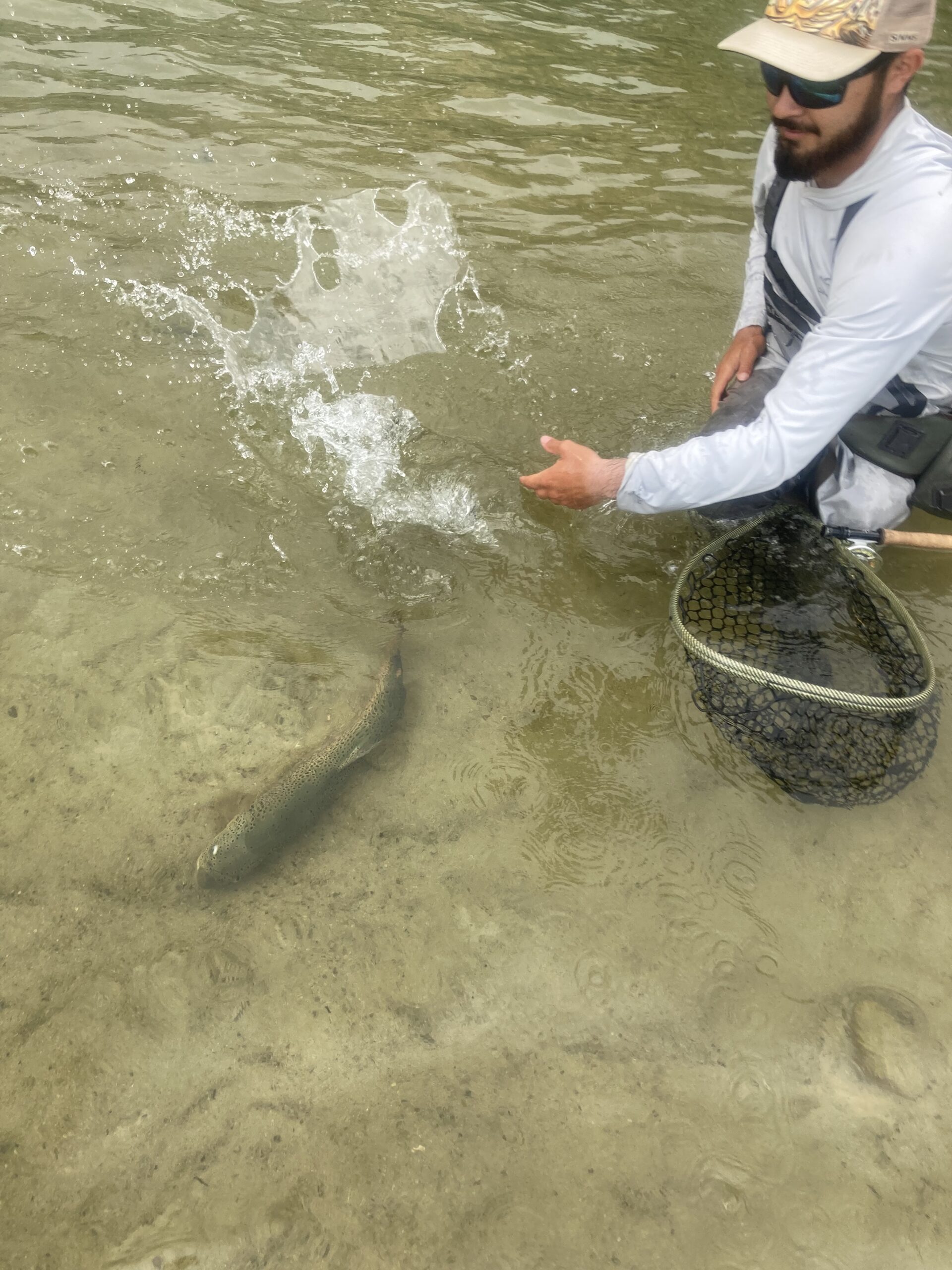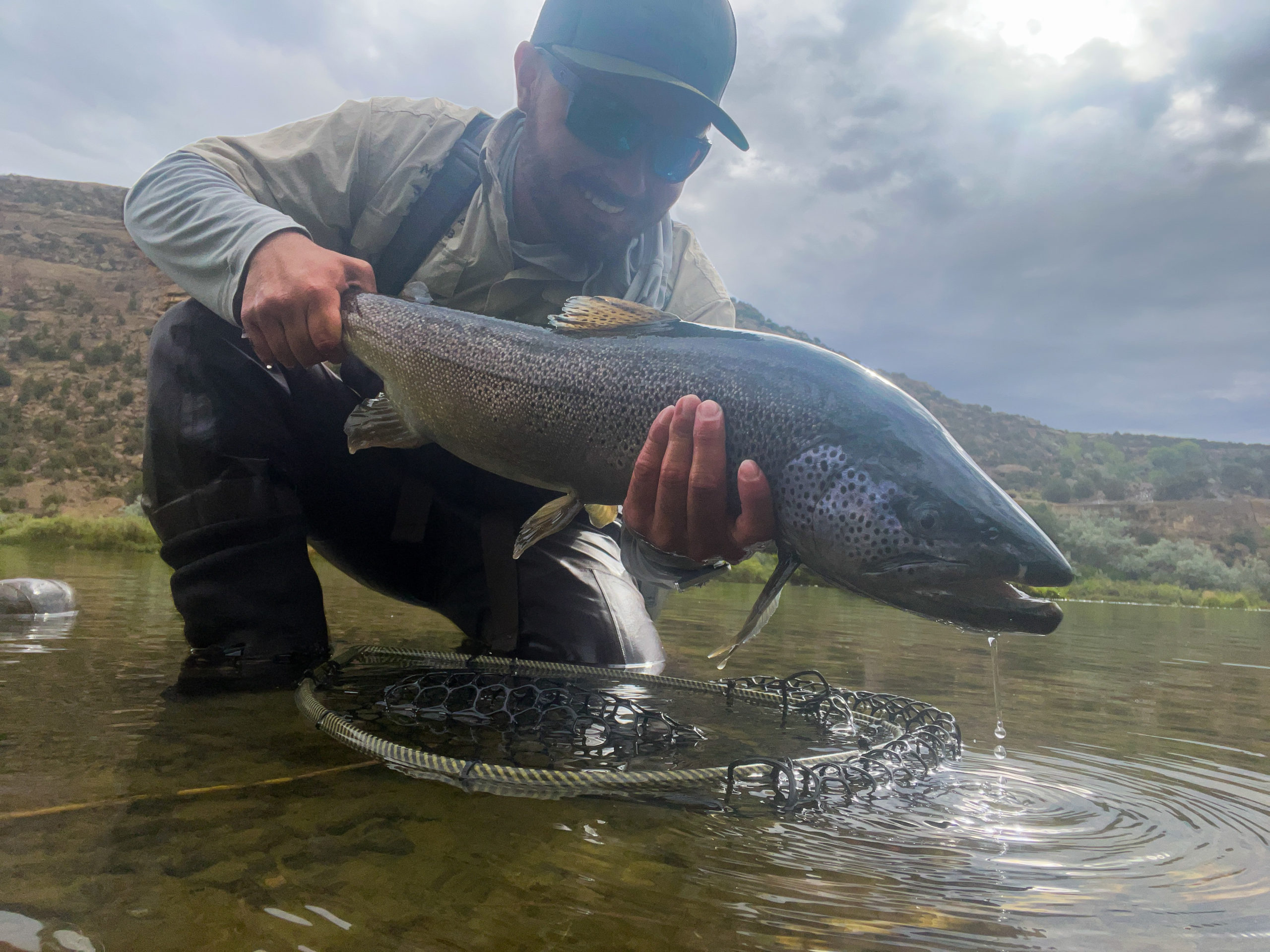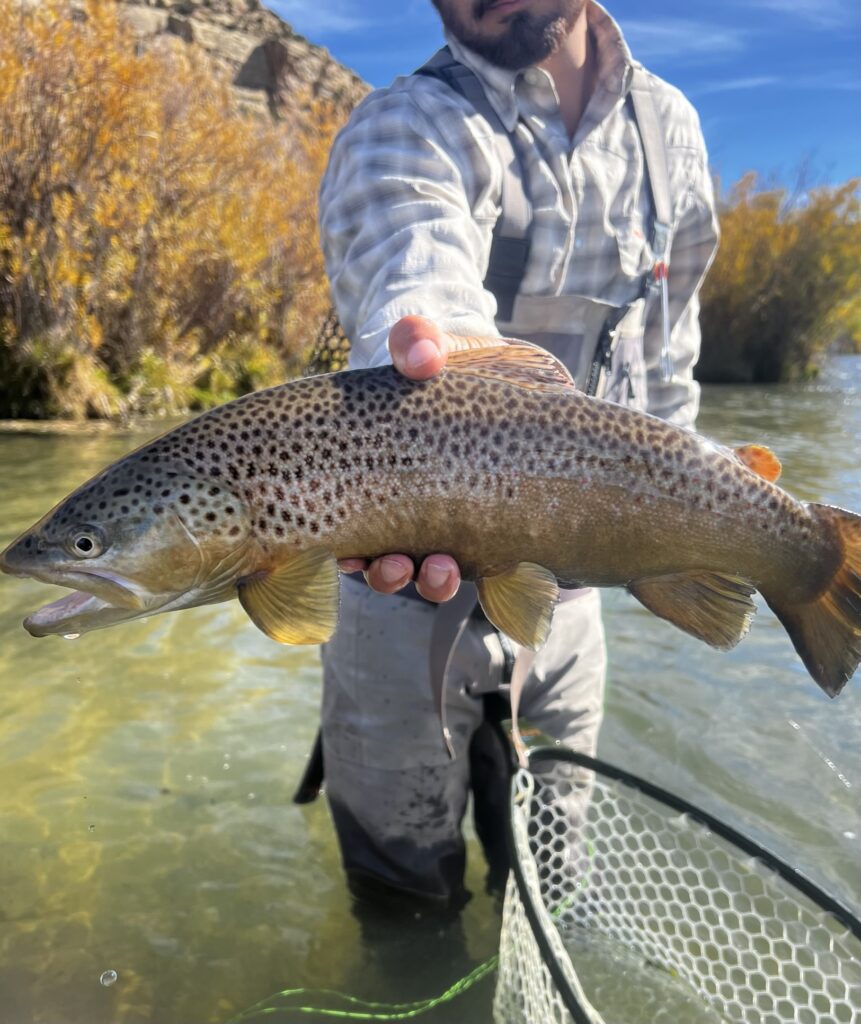“What do the fish want?” This question is deeply rooted in our innate desire to understand the nature of the fish we are looking at, so they can ultimately end up in our net. I want to provide you with some insight that will boost your knowledge of these fish — especially relating to tailwaters.
NOW YOUR FLY BOX
The story goes like this: you put your waders on, rig your rod, walk into the river, cast about 50 times, but can’t get a fish to eat your bugs. We’ve all experienced this at one point in time, and we often begin to think it’s the start to a tough day on the water.
As an adamant believer in presentation over fly selection, I still think there are a few technical aspects you may want to consider when you make those first casts of the day.
Most anglers will begin their day of fishing in the early morning. While we may not think much of this small detail, an important constituent to our success lies right before our own eyes — sunlight.
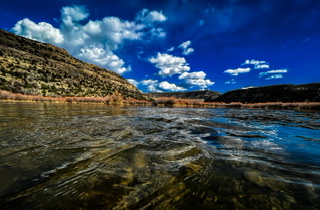
The light spectrum affects what is more-or- less attractive to fish at different times of the day. Different colors are filtered out by water depending upon their depth. For example, red will filter out higher into the water column than purple or blue. Nonetheless, most colors will never filter away in most rivers because they are not as deep as an ocean, but there is still more to consider in relation to light.
In the morning, there is less visible light because the wavelengths of the sun must penetrate through more of the atmosphere to reach us. When the sun is directly overhead, the angle of incidence allows that light to pass through more easily. To simplify this: you have less light for the fish to see your fly on those early mornings or late afternoons.
One of my favorite ways to garner more attention from fish is to start my day with a fly that has a fluorescent color or UV flash built into it along with a dark colored larva which can absorb more light and stand out amongst the other bugs. As the day goes on, and that sun moves over-head, I may transition to more ”natural” looking bugs with less flash.
This gets more complex, however, when we factor in entomology and the bug cycle. While a fly with flash or UV may work well in the early mornings, it can also work simultaneously as a midge pupa when you see backs breaking the surface. Likewise, although red filters out of water the quickest, most red larva begin their life near the bottom of the river, and it’s safe to assume the fish won’t pass on an opportunity for a good meal. Therefore, we don’t need to be as much concerned with the light spectrum in terms of depth, but rather the time of day. Consider this when you stroll into the river on a cool summer morning, or warm, late afternoon.
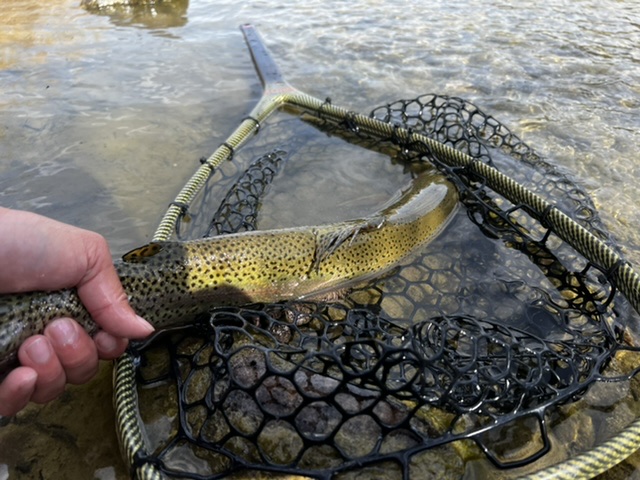
FISH HABITS
Take a moment to pause and watch what the fish are doing. For a brief moment you will notice something — you and the fish are both learning.
As silly as that may sound without any context, allow me to explain. By staring at a fish and observing their behavior, you will notice that they, too, are making their own discoveries. Trout are notoriously intelligent, and much of that is due to their desire to investigate their environment. Since fish do not have arms, they are constantly probing their area with their mouths. I can recall seeing many trout digging their noses into the river to grab something, only to immediately purge it out with a big ”puff”. This is how they learn what is, or isn’t food.
The reason this is important is because it translates to fly selection. Have you ever tied on one of your confidence patterns, made a cast, and were shocked to find out that the fish was completely disgusted with your decision? Well, that could be for an assortment of reasons, but it can be partially attributed to the fact that they have been hyper-exposed to that exact fly on that particular day.
Now, I’m not a believer that flies won’t work as well if many people fish them. A simple red larva that consists of red thread on a size 22 hook has worked for years on the San Juan, and will always continue to work just as well. Still, the question remains: what if you use something totally new?
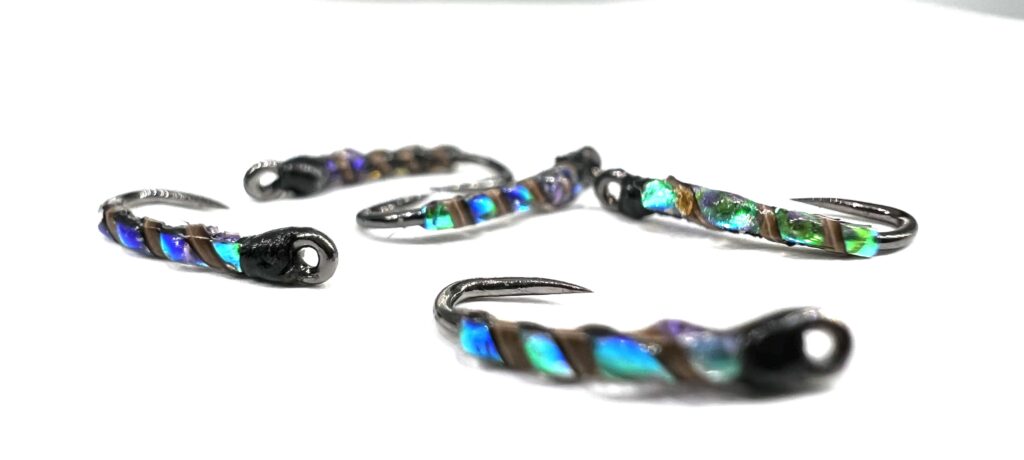
Here is an example of a fly I tied called the “Super Midge”. Initially, it could be brushed off as ”too flashy” or ”unrealistic”. Those sentiments are understandable, but, to my knowledge, it has never been used at the San Juan. Nevertheless, I fished it, and it worked. But why?
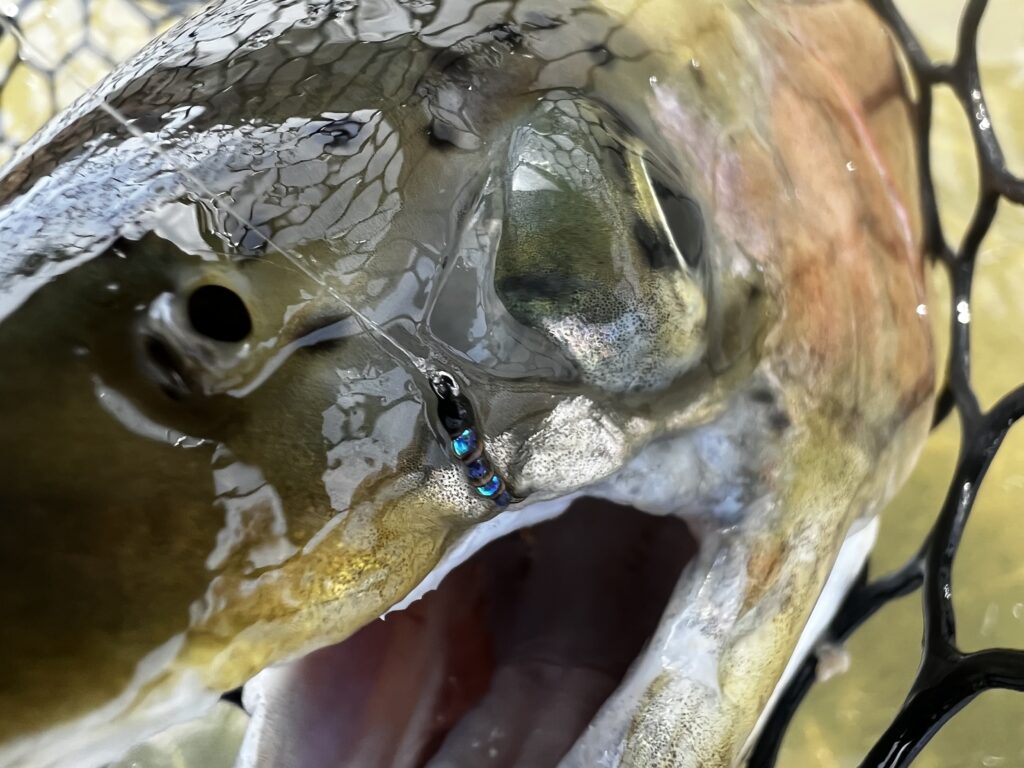
The look on the fish’s face says it all. The case of ”curiosity killed the cat” translates loosely to ”curiosity fooled the trout” in this scenario. Did this fish mistake this fly for food? Maybe. But a more educated assumption would be that this fish found that fly intriguing enough to nibble at.
The point I’m getting at is you have more power over these fish than you may believe. You have the ability to be creative with your fly tying and introduce these fish to something new that may trigger a reactionary bite when your confidence pattern has been exhausted by other anglers. Don’t fall victim to the ”gotta have the right fly” mentality. Take a moment to pause, watch the fish, and they will teach you what you need to know.

